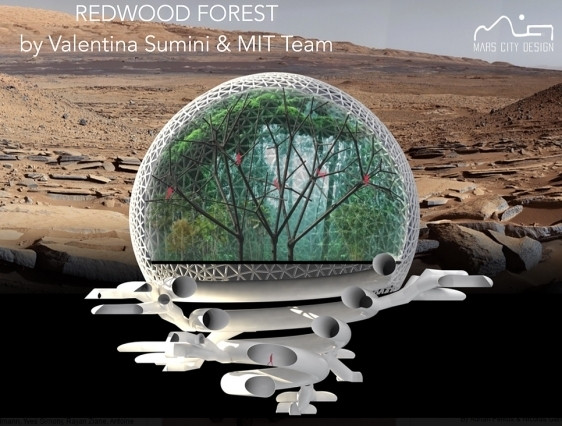Giant domes that house entire forests could be key to living on Mars
The designs can house up to 10,000 people.

Giant forest domes and underground tunnels could be the answer for humans hoping to one day inhabit Mars.
At the annual Mars City Design competition, a team of nine students from MIT took first place with their "Redwood Forest" concept. Led by MIT postdoc Valentina Sumini, Redwood Forest shows a series of domes that would be connected via underground tunnels. Above the surface would be trees, grass and bodies of water, while the tunnels would protect humans from the harsh conditions of Mars such as cosmic radiation and -80 degree nights.
Up to 10,000 people would be able to live in the colony. Redwood Forest uses Martian resources such as ice, water, soil and sun to support life, Sumini told MIT News. "On Mars, our city will physically and functionally mimic a forest," Sumini said. "Designing a forest also symbolises the potential for outward growth as nature spreads across the Martian landscape. Each habitat is unique and contributes to a diverse forest of urban spaces."
The competition, which is held every year, is open to squads of scientists, engineers and students who put forward realistic living scenarios for the red planet.

Water is a key element to Redwood Forest running successfully. Beyond drinking, it will protect people from radiation, manage heat and supply hydroponic farms for growing fish and food.
Aeronautics and astronautics doctoral student George Lordos said every dome is designed as a water-rich environment. "Solar panels produce energy to split the stored water for the production of rocket fuel, oxygen and for charging hydrogen fuel cells," he said. "[This is] necessary to power long-range vehicles as well as provide backup energy storage in case of dust storms."
The MIT team even floated the idea of Redwood Forest being used on Earth at high altitudes, in deserts and on the ocean floor.






















